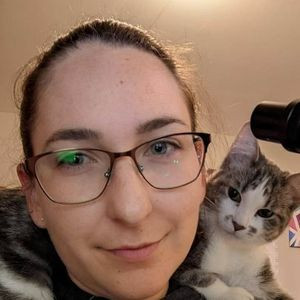Swollen eyes in cats, characterized by an increase in the size of the eyelid, eyeball, or surrounding eye structures, can be a worrying sight for any cat owner. This swelling, often resulting from irritation, injury, or inflammation, can cause a cat to squint or even have difficulty opening their eyes. While not a common occurrence in cats, swollen eyes should always be taken seriously as they can indicate underlying health issues that require prompt attention.
Decoding Cat Eye Swelling: Potential Causes
If you notice your cat’s eye is swollen, understanding the possible causes is the first step towards getting them the right care. Generally, swelling arises from irritation affecting three main areas of the cat’s eye:
- Eyelids: The outer protective layers of the eye.
- Conjunctiva: The delicate lining covering the eye and inner eyelids.
- Eyeball: The globe itself and its surrounding tissues.
Irritation in these areas can stem from a variety of factors, including:
- Environmental Irritants: Just like humans, cats can react to allergens and irritants in their environment. Insect stings, particularly around the face and eyes, are common culprits. Other allergens like pollen, dust mites, or mold can also trigger eye swelling.
- Foreign Objects: Cats are curious creatures, and their adventures can sometimes lead to foreign materials like dust, debris, or plant matter becoming trapped in their eyes. This irritation can quickly lead to swelling as the eye attempts to flush out the unwelcome guest.
- Traumatic Injuries: Scratches, scrapes, or blunt force trauma to the eye area can cause immediate swelling. These injuries can occur from playing, fighting with other animals, or accidental bumps.
 cat-eye-injury
cat-eye-injury
Identifying Risk Factors for Cat’s Eye Swelling
The nature and severity of a cat’s eye swelling can provide clues about the underlying cause. Consider these risk factors when observing your cat:
- Sudden vs. Gradual Onset: Swelling that appears suddenly is often linked to acute events like injuries, insect stings, or foreign objects entering the eye. Gradual swelling may suggest a developing eye condition, infection, or even a tumor.
- One Eye vs. Both Eyes: Swelling in only one eye is frequently associated with localized issues such as trauma, a sting on one side of the face, or a foreign body in that specific eye. When both eyes are swollen, it is more likely to indicate a systemic issue like an infection or allergic reaction affecting the whole body.
- Accompanying Symptoms: Isolated eye swelling might point to a local problem like eyelid disorders, eyelash issues, or a foreign object. However, if swollen eyes are accompanied by other symptoms such as sneezing, hives, weight loss, fever, or skin irritation, it suggests a broader, systemic issue like an infection or a widespread allergic reaction.
- Insect Stings and Allergies: If your cat has been stung by a bee or wasp near the eye, the severity of the swelling can depend on whether your cat has an allergy to insect venom. Allergic reactions can be severe and require immediate veterinary intervention.
It’s crucial to remember that cats showing signs of a severe allergic reaction, such as vomiting, difficulty breathing, or collapse following an insect sting or for any other unknown reason, require emergency veterinary attention.
Diagnosing the Cause of Swollen Eyes in Cats
Veterinary diagnosis of swollen eyes in cats involves a comprehensive approach, starting with physical and ophthalmic (eye-specific) examinations.
Ophthalmic examinations may include:
- Ophthalmoscopy: Examination of the inner structures of the eye using an ophthalmoscope.
- Schirmer Tear Test: Measures tear production to assess for dry eye or overproduction of tears.
- Intraocular Pressure Measurement (Tonometry): Measures the pressure inside the eye to screen for glaucoma.
- Fluorescein Stain: A harmless dye is applied to the eye to reveal any corneal ulcers or surface damage.
In some complex cases, a veterinarian might recommend referral to a veterinary ophthalmologist, a specialist in animal eye care, for advanced diagnostics and treatment.
 cat-eye-exam
cat-eye-exam
Treatment Strategies for Cat Eye Swelling
Treatment for a cat’s swollen eye is entirely dependent on identifying and addressing the underlying cause. Treatment approaches can range from simple at-home care to more intensive veterinary interventions:
- Wound Care: For injuries, cleaning and caring for any wounds around the eye is crucial to prevent infection and promote healing.
- Medications: Depending on the diagnosis, your vet may prescribe:
- Antibiotics: To combat bacterial infections.
- Antifungals or Antivirals: To treat fungal or viral infections.
- Pain Relief: To manage discomfort and inflammation.
- Antihistamines: To alleviate allergic reactions.
- Dental Care: In rare cases, dental issues can contribute to facial swelling that may appear to involve the eye area. Addressing dental problems might be necessary.
- Surgery: In severe cases, such as those involving tumors or irreparable eye damage, surgery, including eye removal (enucleation), might be considered as a last resort.
Distinguishing Swollen Eyes from Normal Feline Eye Appearances
It’s important to differentiate true swollen eyes from normal feline eye behaviors or appearances. For example, sleepy cats or those adjusting to bright light often partially close their eyelids, which can mimic swelling. Some cat breeds also naturally have slightly puffy eyes. If you are unsure, it is always best to consult with your veterinarian.
When Is Swollen Eye in Cats an Emergency?
While any instance of cat’s eye swelling warrants veterinary attention, certain accompanying symptoms elevate the situation to an emergency. Seek immediate veterinary care if your cat exhibits swollen eyes along with:
- Difficulty breathing or labored breathing
- Vomiting or diarrhea
- Lethargy or collapse
- Significant pain or distress
Prompt veterinary intervention in these cases can be life-saving and prevent potentially permanent vision loss.
If you are concerned about your cat’s eye health, it’s always best to err on the side of caution and consult with a veterinarian. Early diagnosis and treatment are key to ensuring your feline friend’s long-term eye health and overall well-being.
References
- Why Is My Dog’s Eye Swollen? ADRIENNE KRUZER – Writing for The Spruce Pets
- My Dog’s Eye is Swollen, What Do I Do? DR. ASHLEY GRAY – Writing for Veterinary Emergency Group
- Why Is My Dog’s Eye Swollen? No Author – Writing for Dutch
- What to Do if Your Dog Is Stung by a Bee or Wasp AKC Staff – Writing for The American Kennel Club
- What to Do if Your Dog is Stung by a Bee Dr. Beth Turner – Writing for Preventive Vet
- First Aid for Insect Stings in Dogs Krista Williams, BSc, DVM, CCRP; Lynn Buzhardt, DVM – Writing for VCA Animal Hospitals
Our Editorial Committee
Our medical review team is dedicated to ensuring the accuracy and quality of our pet health information.
 vet-jenna-thebeau
vet-jenna-thebeau

